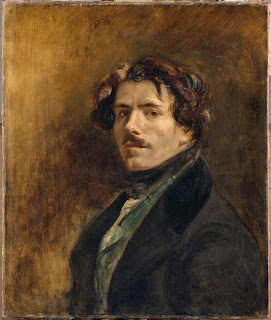THE FUTURE IS NOW
NEWSPAPER.. / What’s Happening Today? /
The Future Is Now (Or at Least Very Soon)
What VR Means for Galleries.
The Future Is Now (Or at Least Very Soon)
What VR Means for Galleries.
Virtual reality has hit the mainstream seemingly overnight.
The New York Times posts daily 360° videos and has a virtual reality app, 200,000 developers are registered with Oculus to create VR games, and the Hirshhorn created a VR version of Yayoi Kusama’s Infinity Mirrors exhibition. These organizations, among others, are seeing the incredible potential of VR technology.
Virtual reality offers two unique advantages. First, it can be used to experience a space—like a gallery—in an incredibly realistic manner without setting foot in it. Second, it offers entirely new experiences that no one has ever had before. Arts organizations are beginning to take advantage of the former, and artists are exploring the latter.
While VR may not change the way galleries are run immediately, keeping an eye on the digital landscape will inform the future of your gallery’s programming. There are steps you can take now, investments both small and large, to prepare your gallery for what’s to come—and generate excitement about your program in the short term.
The Basics: What are VR and AR?
The Basics: What are VR and AR?
Virtual Reality (VR) is a completely immersive experience for the user, wherein you can’t see anything other than the feed to your headset. The HTC Vive and the Oculus Rift are the big players in this market, though many companies (including Google) have also created low-budget cardboard headsets that create a more rudimentary VR experience for just a few dollars.
Augmented Reality (AR) is the injection of virtual “objects” into the real world around you. The most widely-recognized AR application so far is Pokémon Go, which uses smartphone cameras to superimpose Pokémon onto the real-life terrain surrounding the user. Artsy recently collaborated with Microsoft, artist duo Studio Drift, and Pace Gallery to bring an augmented reality installation to The Armory Show, pictured below.
What’s Happening Today?
To date, video games have been the primary use case and source of excitement for VR. However, there are myriad opportunities in other industries—in a 2016 report, Goldman Sachs picked out “videogames, live events, video entertainment, healthcare, real estate, retail, education, engineering, and military” as the key market drivers for the future of VR. They also noted that $3.5 billion had been made in venture capital investments from 2014–2015, indicating the potential for growth.
There have been many creative uses of VR cropping up, too. Google produced an Oscar-nominated VR film, and the New Museum has created an app for virtual reality artworks which is freely available for download. Tate Modern recently put out a tour of its Switch House shot in 360°, an impressive experience even without a VR viewer.
New Realities for Galleries
You’re not obligated to be an early adopter of expensive VR tech, but make sure you’re prepared for it to become as ubiquitous—and necessary to galleries—as the JPEG is today.
You’re not obligated to be an early adopter of expensive VR tech, but make sure you’re prepared for it to become as ubiquitous—and necessary to galleries—as the JPEG is today.
Given the promise of VR and AR for the future, what should your gallery invest in now to be part of the conversation? Creating VR/AR content is definitely a long-term investment, but well-executed content can also help to generate enthusiasm and press for your gallery—and it’s not as hard as you might think. Here are our recommendations:
Today
Develop 360° content. This can be as simple as capturing a panorama with a smartphone and uploading it to your gallery’s Facebook page; this technique allow users to interact with the photo by clicking and dragging on a desktop or moving their phone around to view different parts of the scene. 360° content can be thought of as VR-lite—it’s accessible to anyone and provides an extra way for visitors to interact with your gallery’s content.
This Year
Consider purchasing a dedicated 360° camera, which will cost $200–$300 and can lead to some incredible visuals. This video was shot by Artsy’s social media team at the aforementioned Kusama exhibit, and while this particular clip isn’t designed for use with VR viewers, such content can be created with the same camera. We used an Insta 360 Nano, a camera that can be easily attached to an iPhone for uploading and sharing.
The Ricoh Theta S and SC are also good options; both shoot excellent 360° photo and video, which the only differences being that the S can record longer videos and can stream live content. 360° photos can be easily shared to Facebook, and videos can be uploaded to Vimeo or YouTube and can be watched with VR headsets.
Next Year
Connect with other galleries who are doing VR well and consider incorporating it into future exhibitions—that could mean working with VR artists or creating content yourself. For example, Paul Kasmin Gallery’s recent Naturalia exhibition included a VR artwork alongside works on paper and canvas, pictured below. Exploring other gallery’s programs will help you figure out what might be practicable for your gallery.
It’s also worth keeping an eye on what’s happening in VR outside the art world, and make sure to consider the unique ways in which other organizations are using it to wow (and woo) their target audiences. Last year, Audi unveiled virtual showrooms that would allow car-buyers to customize every aspect of a car and view it rendered in real-time through an HTC Vive headset—an experience very much in line with the company’s branding and customer base.
The Future Is Now (Or at Least Very Soon)
Beyond these immediate applications, we expect to see augmented and virtual reality taking off in a big way as the technology becomes cheaper and more accessible. Producing content for these mediums is becoming easier, and more people will purchase headsets as they find content that they want to engage with.
Beyond these immediate applications, we expect to see augmented and virtual reality taking off in a big way as the technology becomes cheaper and more accessible. Producing content for these mediums is becoming easier, and more people will purchase headsets as they find content that they want to engage with.
The art market is increasingly coming online—while most galleries are holding on to their physical spaces, the need for high-quality websites and third-party services like Artsy has become clear—and this could mean that the art world will find it an easy transition. There are plenty of art-focused applications for augmented and virtual reality that have yet to be realized: Imagine attending an auction from your living room and viewing each work on your wall in real time, or strolling the aisles of a fair from the comfort of home. There are too many possibilities to count, and we’re excited to watch them unfold.
Kind regards Pierrre






Comments
Post a Comment
Thank you for your response
Kind regards Pierre